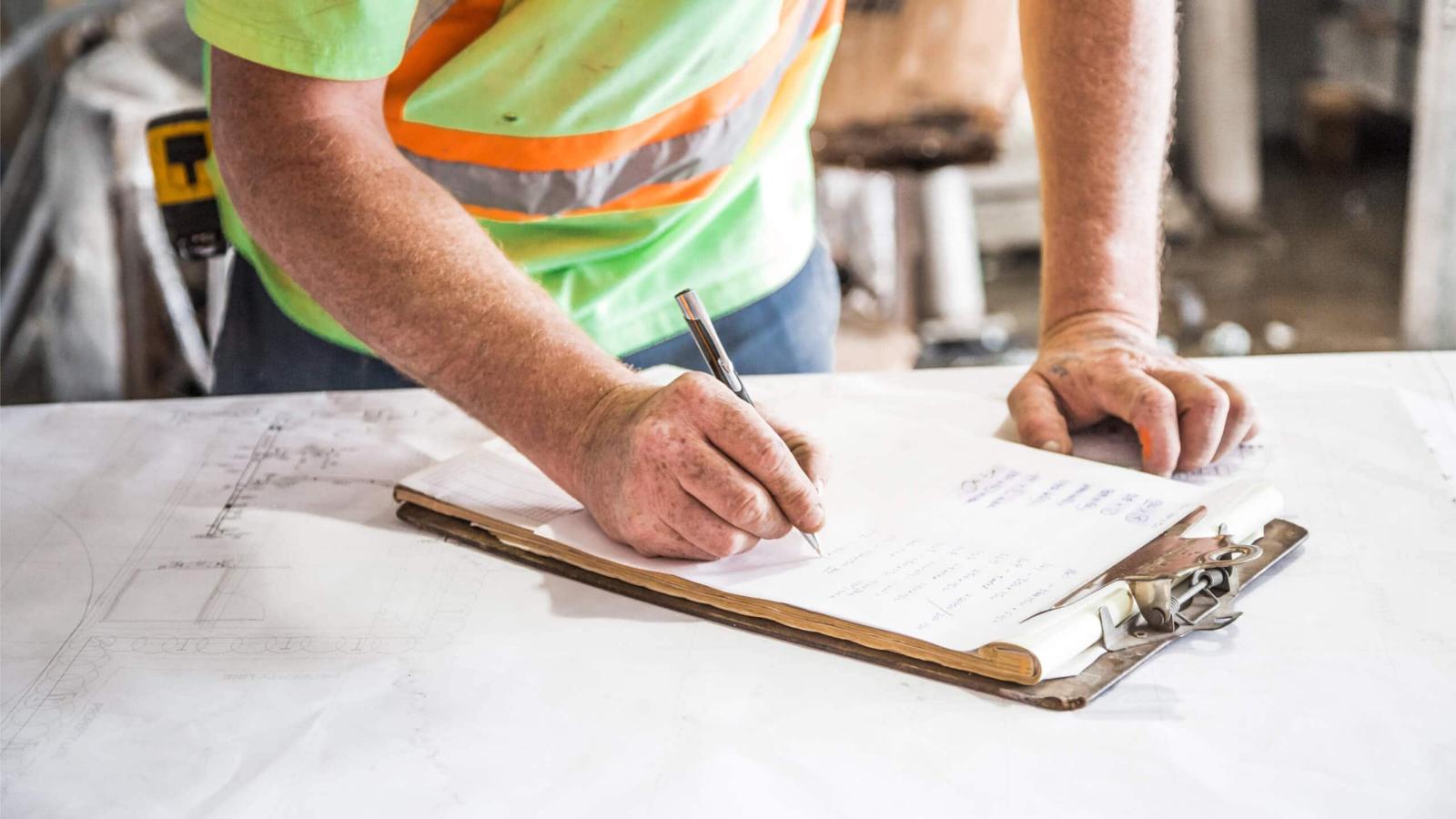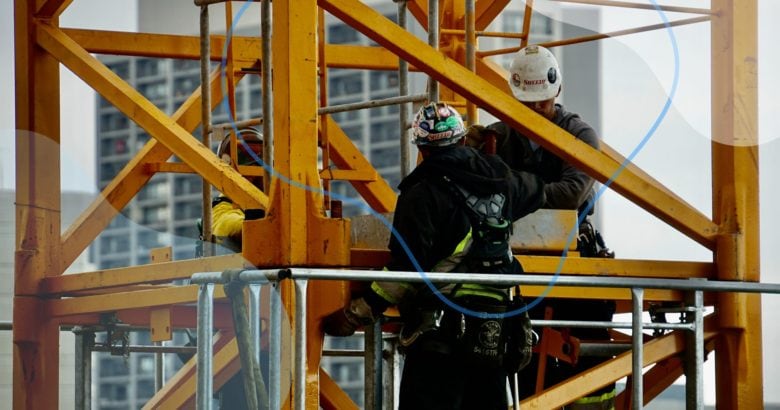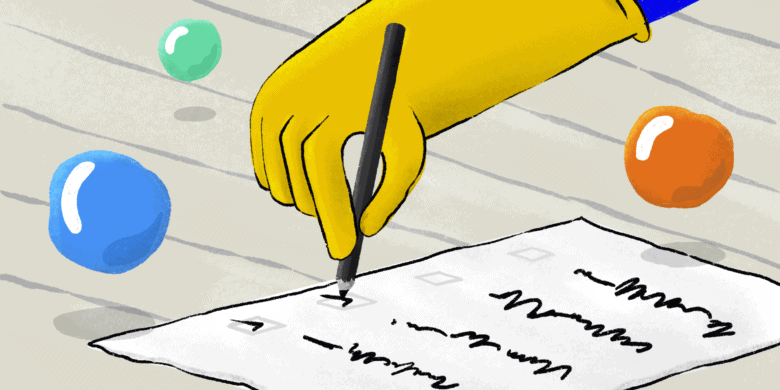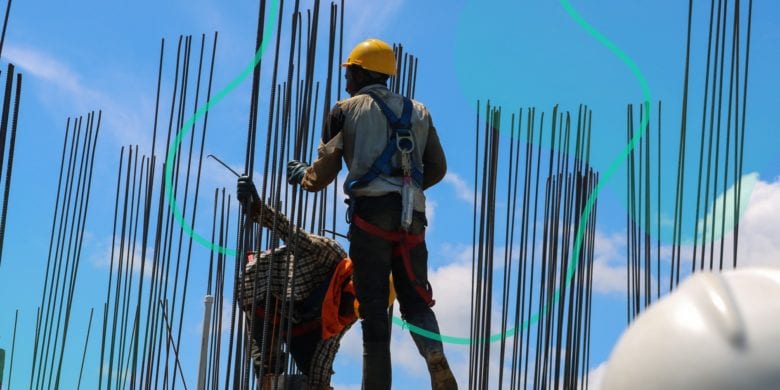Your construction punch list can prevent some very expensive problems.
Have you ever worked with an owner who wanted Ritz Carlton quality on a Motel 6 budget?
Everyone wants great quality at an affordable price, but that means different things to different people. Work out the details and get absolute agreement before you break ground to avoid costly disputes later.
Without a solid punch list, you leave the details open to interpretation. Imagine walking the owner through the job site and hearing this:
“This isn’t what I asked for. I’m not paying until you fix it.”
Ouch. Invest the time to create a punch list from the start so you don’t waste time negotiating after the build is already underway.
Boost your team’s efficiency with Hubstaff's productivity tools
Try it free for 14 daysWhat is a construction punch list?
A construction punch list is a detailed list of work items that aren’t in the contract, but need to be verified before the job is complete. These are things like making sure there are no nail heads showing and all the doors open and close smoothly.
Why is it called a punch list? The term “punch list” is basically an old way to say “checklist.” The builder would punch a hole in the paper to mark an item complete.
Think of your punch list as insurance that you’ll get paid. The owners, contractors, and architects all agree on standards. It gives you a concrete definition of a job well done.
Involve all stakeholders to create the list and verify punched items in the pre-final walkthrough. Everyone should have access to the list throughout the project, too. It’s okay to use a template — just make sure you review it with everyone and that all agree.
Why a construction punch list is important
A punch list clearly defines all the details you need to include in a finished job.
Working from your punch list ensures that you don’t waste time and money on the wrong things, and that you’ll get paid as agreed when the job is done.

Usually, your punch out is directly linked to your payment. The owner holds onto retainage until you verify that everything on the list is completed during the pre-final walkthrough.
Javier Enciso from ENC Construction and Design says: “We have a punch list for all of our jobs. It’s crucial to deliver a superior project.”
From beginning to end, your punch list helps at every step of the project.
Contract negotiation
The owner, designer, and contractors should agree on punch list items when the contract is signed. You’ll find and fix any mismatched expectations before they cause problems.
Since the contract doesn’t include these details, your punch list gets everyone on the same page right away. The owner knows what to expect for their money. The contractor and subcontractor know what needs to get done and what doesn’t. The architect or designer can accurately visualize the finished project.
This is a good way to start a business relationship. Each stakeholder feels more confident after discussing these details.
During the build
Your punch list helps control project costs. Clearly defining the most important items keeps your crew focused on the right things.
Everyone has access to the same punch list throughout the project. Items should be assigned to specific people or teams, and those people can upload pictures when an item is punched. That helps everyone stay up to date on the project even if they’re not on site.
Assigning specific items to individuals also makes sure that nothing gets overlooked because everyone thought someone else was doing it.
A thorough punch list helps control costs and rework, too. If and when the owner requests changes while the build is already underway, go back to the punch list and review everything that’s already expected.
Adding new items to the punch list might mean additional costs. This keeps things fair for everyone because changing course in the middle of the project is expensive.
At the pre-final walkthrough
Just before the build is finished, the owner, contractor, and designer should walk through together and verify that all the punch list items are complete. The general contractor should point out any unfinished items and talk about the plan to finish them.

Using your punch list during the pre-final walkthrough means you’re more likely to get paid on time.
Since you agreed on the details at the start, verifying that everything is completed according to the punch list takes the subjectiveness out of final approvals. The job is done when the contract terms are met and all the punch list items are completed.
The punch list walkthrough also helps you avoid expensive disputes. You all agreed on the requirements for this job, and now the only question is whether those things are done or not.
Plus, if you run into any compliance or code issues, the punch list gives you a detailed record that shows who completed and inspected each item.
Punch list roles
To make sure that your punch list is managed properly, you need to know who is responsible for each item. Every stakeholder must have some level of involvement.
All parties should read and approve the punch list. After the contract is signed, the owner, architect, contractor, and any subcontractors should meet to create and approve the list.
Once the project is underway, adding items to the punch list is like adding terms to the contract. All stakeholders must agree to changes, and there might be a budgetary impact.
After the punch list is created and approved, everyone still has a role:
The Owner/Client
The project owner leads walkthroughs and inspects all aspects of the work. Even before the pre-final walkthrough, the owner should be able to review what punch list items have already been completed.
Throughout the project and especially at the pre-final walkthrough, the owner makes note of any work on the list that’s incomplete or unsatisfactory. These issues are raised with the general contractor.
The Architect/Designer
Architects are frequently on-hand during projects to address issues and changes. If the design needs to be altered, it’s the architect’s job to point out any punch list items that may be impacted.

Architects also participate in the final walkthrough to answer questions, explain why alterations to the original plan were made, and verify that the contractors have built everything according to their design.
The General Contractor
The general contractor is the main construction project manager and the central point of contact. While the punch list is being created, it’s up to the general contractor to point out anything that may be impractical or outside of your budget.
As the build begins, the general contractor assigns punch list items to the teams and subcontractors who are responsible. It’s up to the general contractor to make sure these teams stay on track.
Subcontractors
Specialty contractors work from their punch lists throughout the project. If there are any problems or delays, they communicate with the general contractor.
Any punch list items that are incomplete or not up to standards during the pre-final walkthrough are addressed by whichever team or individual was assigned that item.
Subscribe to the Hubstaff blog for more construction management tips
How to prepare a great punch list
1. Keep communication flowing
Avoid confusion and missed deadlines by checking in regularly.
The punch list is a working document. Use it to schedule shifts, set and adjust deadlines, and regularly check on progress. If an item isn’t getting punched when you think it should, that’s a sign that there may be a bigger problem that can cause construction delays.
2. Document work as it happens
Take progress and completion photos. This is important for a few reasons:
If the next subcontractor on a project damages or alters work that was already completed, having photos can help you diagnose the problem. It also makes it easier to address the fixes with the right person.

The owner should be able to look at punch list progress photos to stay informed, too. Instead of asking for a walkthrough, they can just check the punch list and see whether or not the build is on track.
Documenting progress helps keep you organized, too.
A good punch list is thorough. If you’re not tracking as you go, it’s easy to overlook things. Punch items as they’re completed to help you stay organized. Taking pictures makes it less likely that you’ll accidentally mark something complete that you haven’t done yet.
3. Make sure everyone knows what’s in the contract
The punch list covers things that aren’t mentioned in the contract. That means that it doesn’t include the deliverables that are defined in the contract.
As punch list items are assigned to teams and subcontractors, make sure that they’re clear about the contract terms, too. It would be frustrating to find that someone completed their punch list items but neglected a major deliverable.
Construction punch list items
The length and detail of your punch list will depend on the type and complexity of your project.
Here are some of the items that most punch lists include:
- Plumbing (drainks, toilets, sinks, faucets) works properly and have no leaks
- Appliances work properly and are fully functional
- All cabinet doors and drawers open/close properly
- HVAC systems works on all settings and is zoned correctly
- Lights, phone jacks, and electric receptacles all work properly
- Door hardware (hinges, latches, stops) work properly
- Doors are tightly sealed and open/close properly
- All locks are correctly installed function
- Windows are correctly installed and open/close properly
- Paint is the right texture, shade and quality
- Floors, ceilings, and walls are damage-free
- There is no damage to other rooms or the exterior/grounds of the building
- There is no dust/debris and all equipment/materials are removed from site
- All hardware is accounted for and nothing is missing
Free template
Get started on your own punch list. Download our easy-to-use template with more than 70 punch list items to keep your project on track.
Get our free punch list template.
Your punch list is part of the crucial final step to having happy clients sign off on a project. But they’re also more than that. Think of a strong construction punch list as an investment in the success of your project.
Each project will have its own challenges — the punch list helps you know where to focus so you can fix problems when they come up. Your thorough and collaborative process sets you up for a fast, smooth, and well-executed job.
Most popular
How to Calculate a Raise: Practical Guide for Employers
By 2030, the US alone will lose $430 billion annually due to low talent retention — and a lot of this turnover stems from low pa...
How to Survive and Thrive in an 80-Hour Work Week
It’s hard to believe that only a century ago, the 80-hour work week was the norm in the United States. Then, in 1926, the Ford M...
Mastering Workforce Scheduling: Techniques and Tools for Success
Imagine a workday where scheduling your workforce effectively ensures that every shift is perfectly aligned with your business nee...
Top Time Trackers for Virtual Assistants: Enhance Efficiency and Accountability
Virtual assistants (VAs) have a lot of responsibilities — and so do the people who hire them. With so much to keep track of, a t...
![What is a Construction Punch List and How to Build One [Free Template]](jpg/construction-punch-list%402x.jpg)



